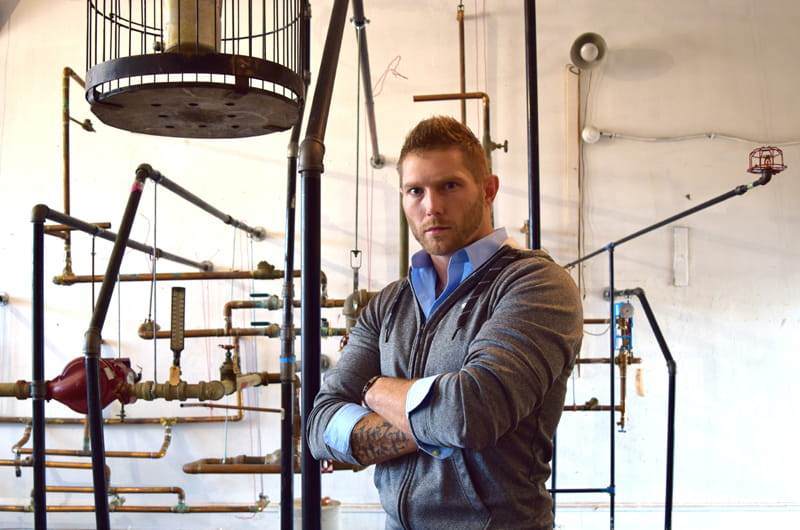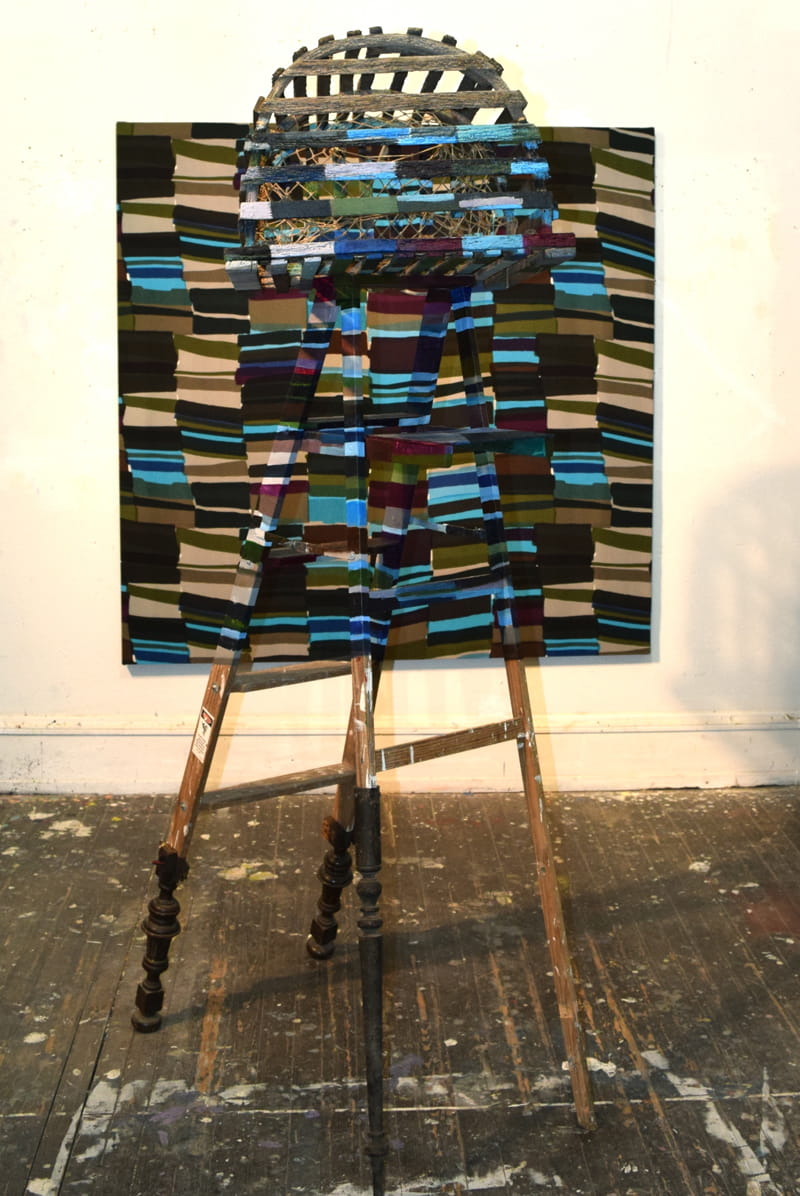Philadelphia Artist Jesse Krimes’ First Solo Exhibition of New Work Since Returning from Prison on Display at Drexel

- Men and Residents of Higher Crime Areas See Greater Benefit from Community Parks, in Reduction of Deaths from Heart Disease
- Happy New Year 2025! Try These Proven Lifestyle Tips to Make Your New Year Happier.
- Faculty Highlights: Recent Awards and Grants
- A Framework for Community-Driven Environmental Justice Guided by the Community

Best known for creating a 39-panel mural out of bed sheets while serving a six-year prison sentence, Philadelphia-based artist Jesse Krimes will open Deus ex Machina, an exhibition of new work at Drexel University on Jan. 12. The exhibition will be on display through March 13 at Drexel’s Leonard Pearlstein Gallery (3401 Filbert Street) of the Antoinette Westphal College of Media Arts & Design.
The exhibition is free and open to the public, Tuesdays – Sundays from 11 a.m. – 6 p.m. A reception and question-and-answer session with the artist will be held on Thursday, Jan. 14 at 5 p.m.
Deus ex Machina explores the hidden mechanics of power using ordinary objects and found materials transformed into precariously balanced systems. “Deus ex Machina,” or “God from the Machine,” is an artistic storytelling device used to resolve an impossible situation. In this case, Krimes draws on his own history of incarceration to explore societal hierarchies and systems through the lens of confinement. Using man-made and natural systems of containment such as birdcages and beehives, Krimes plays with shifting sightlines to create disorienting experiences that reference authoritarian institutions.
This is a show of all new site-specific work created to be shown in the Leonard Pearlstein Gallery. The installations are designed to play off of the modernist white cube and exposed architectural elements of the gallery.
The exhibition is being curated by Julie Courtney, an independent curator from Philadelphia.

“You would think Jesse would be bitter about his experience in prison, but instead it provided a positive impetus for his art,” said Courtney. “He puts together unrelated everyday objects to create layered and thought-provoking works that raise questions about the agendas of the prison system. He is an articulate spokesperson and activist, and his creative energy is inspiring.”
Krimes’ work investigates the human condition to disentangle complex value systems and hierarchies, much like the work of a contemporary sociologist. His most recent installation was featured at Amnesty International’s Art4Rights exhibition in New Orleans. Purgatory was included in the exhibition Le bord des mondes at Palais de Tokyo in Paris.
Krimes' vast multi-panel work Apokaluptein:16389067 debuted at the Zimmerli Museum, Rutgers University. A poetry project, Apocrypha:16389067, is published in The New School’s LIT Journal. He has presented at various venues, most recently at TEDx Philadelphia and Amnesty International's general assembly and re-launch of Art for Amnesty in New York. Philadelphia’s Eastern State Penitentiary Historic Site currently features Apokaluptein:16389067:II in its 2015 contemporary art installation program.
Jesse Krimes was born in Lancaster, Pennsylvania, in 1982. In 2009, Krimes was indicted by the U.S. government on non-violent drug charges and sentenced to a 70-month prison term. While incarcerated, he produced numerous bodies of work, established art programs, and worked collaboratively with his fellow inmates. After completing his sentence, he moved to Philadelphia, where he currently lives and works. For more information, visit www.jessekrimes.com.
About Julie Courtney
Since 1991, Julie Courtney’s curatorial practice has commissioned artists to create temporary site-specific projects in historic sites and untraditional art spaces. Courtney has transformed places like Eastern State Penitentiary, where Janet Cardiff and George Bures Miller created a sound installation, Pandemonium, which recreated the feeling of a prison riot. Courtney’s projects bring new audiences to the sites and introduce their current members to contemporary art. For more information, visit www.juliecourtneyprojects.com.
About the Leonard Pearlstein Gallery
The Leonard Pearlstein Gallery, part of Drexel University’s Westphal College of Media Arts & Design, is committed to exhibiting novel and experimental art in all contemporary mediums including digital, video, sculpture, photography, graphics and fashion design. Located in Westphal College’s renovated URBN Annex, the Pearlstein Gallery spans more than 3,500 square feet and invites the public to view exhibits free of charge. For more information, click here.
Drexel News is produced by
University Marketing and Communications.